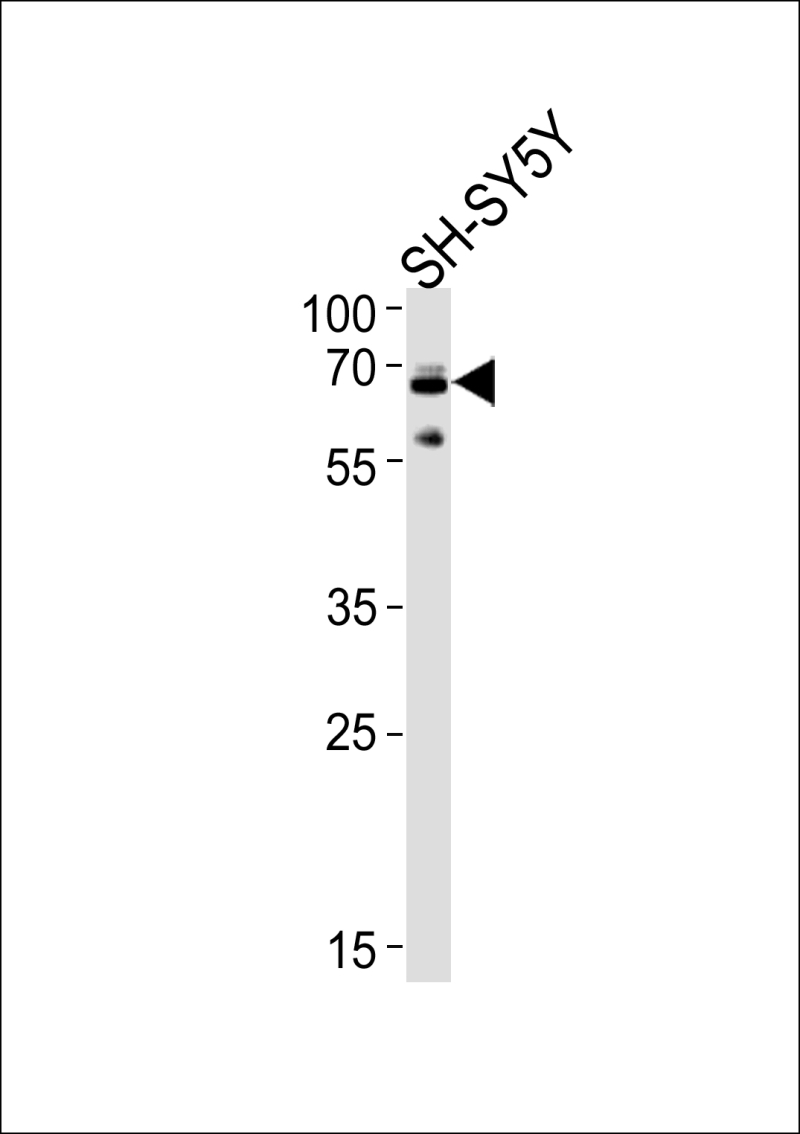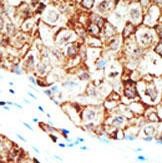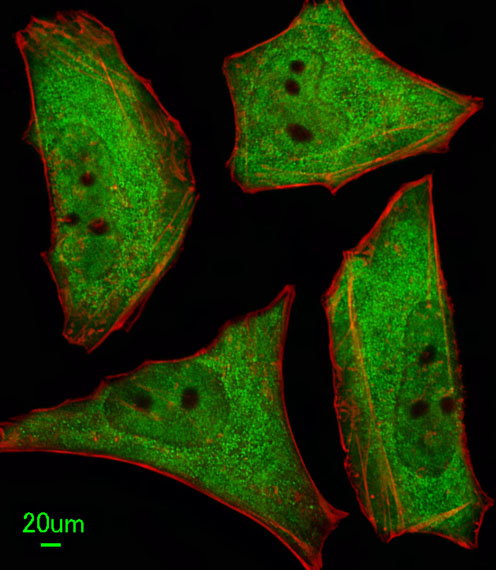


| WB | 咨询技术 | Human,Mouse,Rat |
| IF | 咨询技术 | Human,Mouse,Rat |
| IHC | 1/100-1/500 | Human,Mouse,Rat |
| ICC | 1/100 | Human,Mouse,Rat |
| FCM | 咨询技术 | Human,Mouse,Rat |
| Elisa | 咨询技术 | Human,Mouse,Rat |
| Aliases | Ubiquilin-1, Protein linking IAP with cytoskeleton 1, PLIC-1, hPLIC-1, UBQLN1, DA41, PLIC1 |
| Entrez GeneID | 29979 |
| WB Predicted band size | 62.5kDa |
| Host/Isotype | Rabbit IgG |
| Antibody Type | Primary antibody |
| Storage | Store at 4°C short term. Aliquot and store at -20°C long term. Avoid freeze/thaw cycles. |
| Species Reactivity | Human, Mouse, Rat |
| Immunogen | This Ubiquilin1 antibody is generated from rabbits immunized with a KLH conjugated synthetic peptide between 296-326 amino acids from the Central region of human Ubiquilin1. |
| Formulation | Purified antibody in PBS with 0.05% sodium azide,1%BSA and 50% glycerol.prepared by Saturated Ammonium Sulfate (SAS) . |
+ +
以下是3篇与Ubiquilin1抗体相关的参考文献,按研究领域分类简要概括:
---
1. **文献名称**:*Ubiquilin1 regulates amyloid precursor protein maturation and degradation by stimulating K63-linked polyubiquitination of lysine 688*
**作者**:Hsu et al. (2021)
**摘要**:研究利用Ubiquilin1特异性抗体验证其在阿尔茨海默病中通过促进APP蛋白的泛素化降解来减少Aβ沉积的机制,Western blot和免疫共沉淀证实UBQLN1与APP的相互作用。
2. **文献名称**:*Loss of ubiquilin1 in mice causes motor deficits and protein aggregation in ALS models*
**作者**:Wu et al. (2019)
**摘要**:通过Ubiquilin1敲除小鼠模型,使用抗体验证UBQLN1缺失导致TDP-43等蛋白的异常聚集,免疫组化显示神经元内泛素化蛋白累积,揭示其在ALS病理中的保护作用。
3. **文献名称**:*Ubiquilin1 interacts with LC3 to regulate autophagy flux in cellular models of Parkinson's disease*
**作者**:Lee & Kim (2020)
**摘要**:利用Ubiquilin1抗体进行免疫荧光共定位分析,发现其通过结合自噬标记物LC3调控α-synuclein的清除,为帕金森病中自噬障碍提供机制解释。
---
**领域分类**:
- **神经退行性疾病**(阿尔茨海默、ALS、帕金森):均聚焦UBQLN1在疾病相关蛋白降解中的作用。
- **技术方法**:Western blot、免疫共沉淀、免疫组化、免疫荧光等抗体应用。
- **分子机制**:泛素-蛋白酶体系统(Hsu et al.)、自噬通路(Lee & Kim)、蛋白聚集(Wu et al.)。
需要具体文献全文可通过DOI在PubMed或Sci-Hub查询。
Ubiquilin1 (UBQLN1) is a ubiquitin-like protein involved in regulating protein degradation pathways, primarily through the ubiquitin-proteasome system (UPS) and autophagy. It acts as a shuttle factor, recognizing polyubiquitinated substrates via its ubiquitin-associated (UBA) domain and delivering them to proteasomal or autophagic machinery via its ubiquitin-like (UBL) domain. UBQLN1 plays critical roles in maintaining proteostasis, endoplasmic reticulum-associated degradation (ERAD), and stress response mechanisms. Dysregulation of UBQLN1 has been linked to neurodegenerative diseases, including Alzheimer’s disease, Parkinson’s disease, and amyotrophic lateral sclerosis (ALS), where protein aggregation and impaired clearance are hallmarks.
Antibodies targeting UBQLN1 are essential tools for studying its expression, localization, and interactions in both physiological and pathological contexts. They are widely used in techniques such as Western blotting, immunohistochemistry (IHC), immunofluorescence (IF), and co-immunoprecipitation (Co-IP) to investigate UBQLN1’s involvement in protein quality control pathways. Some studies also utilize UBQLN1 antibodies to explore its role in cancer, where altered UPS activity may influence tumor progression. Commercially available antibodies are typically raised against specific epitopes, such as the N-terminal or C-terminal regions, and validation includes testing in knockout models to ensure specificity. Research using these antibodies has advanced understanding of UBQLN1’s dual role in neuroprotection and disease pathogenesis, highlighting its potential as a therapeutic target or biomarker for neurodegenerative disorders.
×